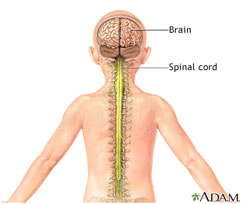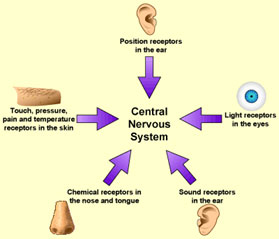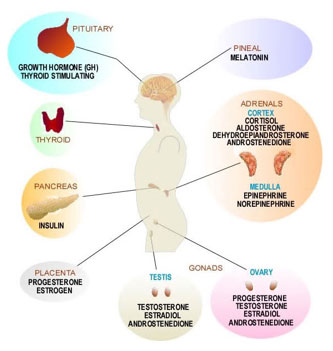
Source: Central Nervous System, National Library of Medicine

Source: Central Nervous System, National Library of Medicine
The brain, spinal cord, sense organs, and nerves make up the nervous system. The nervous system is responsible for the control, coordination, and communication among all the parts of the human body.
The central nervous system is made up the brain and spinal cord.

Source: Sense Organs, All about the nervous system
Eyes, ears, nose, tongue, and skin are the major sensory organs. These organs react to stimuli and send messages to the central nervous system so that a response is produced.

Source: Neuron, IUPI Department of Biology
Nerve cells are called neurons. Neurons communicate with each other by transmitting electrochemical signals.

Source: Hormones of the Body, Center for Health and Healing
The endocrine system includes all the glands of the body as well as the hormones the glands produce. The endocrine system works closely with the nervous system. Glands produce hormones when they receive signals from the nervous system and hormones produced by other glands.
The main function of the endocrine system is to regulate the body and help maintain homeostasis. The endocrine system secretes hormones that regulate metabolism, growth, and reproduction.
The image to the right shows the glands of the human body and the hormones each gland secretes.